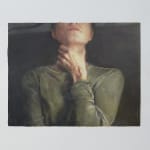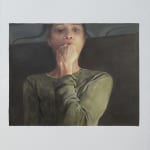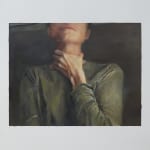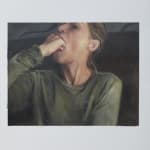
Tenho medo que sim [But truly I do fear it], 2018
Oil and wax on paper
30 x 22 inches each

Tenho medo que sim [But truly I do fear it], 2018
Oil and wax on paper
30 x 22 inches each

Tenho medo que sim [But truly I do fear it], 2018
Oil and wax on paper
30 x 22 inches each

Tenho medo que sim [But truly I do fear it], 2018
Oil and wax on paper
30 x 22 inches each

Tenho medo que sim [But truly I do fear it], 2018
Oil and wax on paper
30 x 22 inches each
Regina Parra
Further images
“Truly I do fear it” is one of Ophelia’s line from Shakespeare’s Hamlet. The literary critic Harold Bloom describes Ophelia as an adorable and fragile figure who is plagued by Hamlet, “a wandering angel, who dies singing.” Ophelia’s passive, drowned body returns in this series of self-portraits, challenging canonical and reductive notions of beauty and female identity.
Regina Parra acts on the existence of torments, desires, fears, pleasures, and wounds. Aware of the risks operating in the topography where the devices of power (feminicide, heteronormativities, sexism) operate, her works dare to face the survival of a body reduced to its “ultimate nakedness” and the restrictions of spaces to which the body insists on reestablishing itself in its subjective and embodied muscle memory.
From the perspective of sexist behaviors that affect the female body and its insurgencies, Parra provokes us to think about how we situate ourselves, build presence, and affect the territories of tension, in which procedures of constraint and stagnation plague the body with verbal prohibition and the obligation to hide what you do.
Text by Galciani Neves, curator of MUBE, Museum of Brazilian Sculpture. On the occasion of the exhibition Regina Parra, FAMA Museum, Itu, 2018.
Provenance
Exhibitions
Regina Parra (2018), curated by Galciani Neves at FAMA Museum, Itu, Brazil
Literature
Brazil: Knife in the Flesh, by Jacopo Crivelli Visconti and Diedo Sileo. Silvana Editoriale. 2019
Publications






